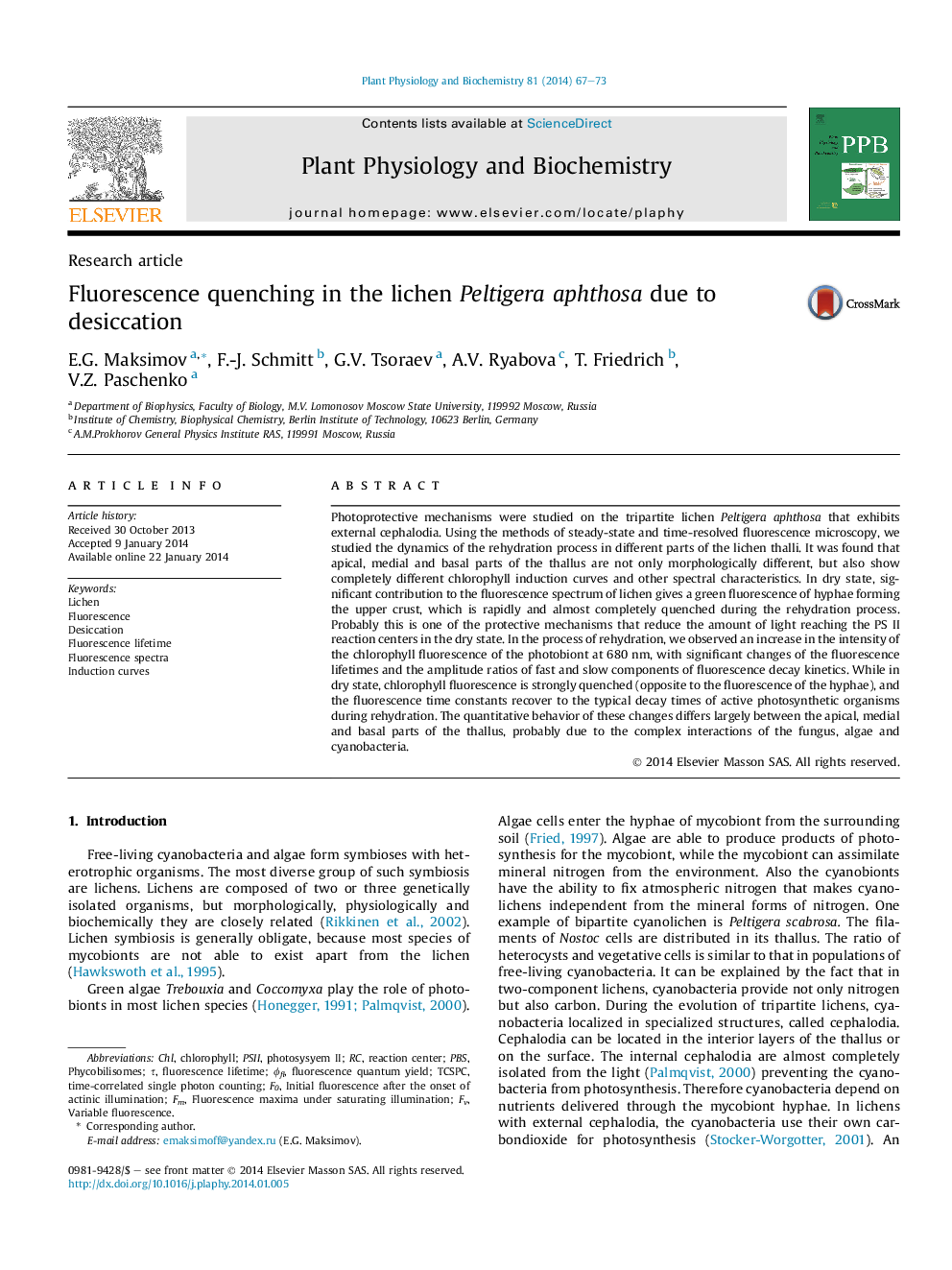| Article ID | Journal | Published Year | Pages | File Type |
|---|---|---|---|---|
| 2015848 | Plant Physiology and Biochemistry | 2014 | 7 Pages |
•Photoprotective mechanisms were studied on the tripartite lichen Peltigera aphthosa.•Rehydration of lichen thallus causes recovery of variable chlorophyll fluorescence.•Changes of the fluorescence intensity are caused by changes of the Chl quantum yield.•Recovery of photosynthetic activity is due to combination of protective mechanisms.
Photoprotective mechanisms were studied on the tripartite lichen Peltigera aphthosa that exhibits external cephalodia. Using the methods of steady-state and time-resolved fluorescence microscopy, we studied the dynamics of the rehydration process in different parts of the lichen thalli. It was found that apical, medial and basal parts of the thallus are not only morphologically different, but also show completely different chlorophyll induction curves and other spectral characteristics. In dry state, significant contribution to the fluorescence spectrum of lichen gives a green fluorescence of hyphae forming the upper crust, which is rapidly and almost completely quenched during the rehydration process. Probably this is one of the protective mechanisms that reduce the amount of light reaching the PS II reaction centers in the dry state. In the process of rehydration, we observed an increase in the intensity of the chlorophyll fluorescence of the photobiont at 680 nm, with significant changes of the fluorescence lifetimes and the amplitude ratios of fast and slow components of fluorescence decay kinetics. While in dry state, chlorophyll fluorescence is strongly quenched (opposite to the fluorescence of the hyphae), and the fluorescence time constants recover to the typical decay times of active photosynthetic organisms during rehydration. The quantitative behavior of these changes differs largely between the apical, medial and basal parts of the thallus, probably due to the complex interactions of the fungus, algae and cyanobacteria.
